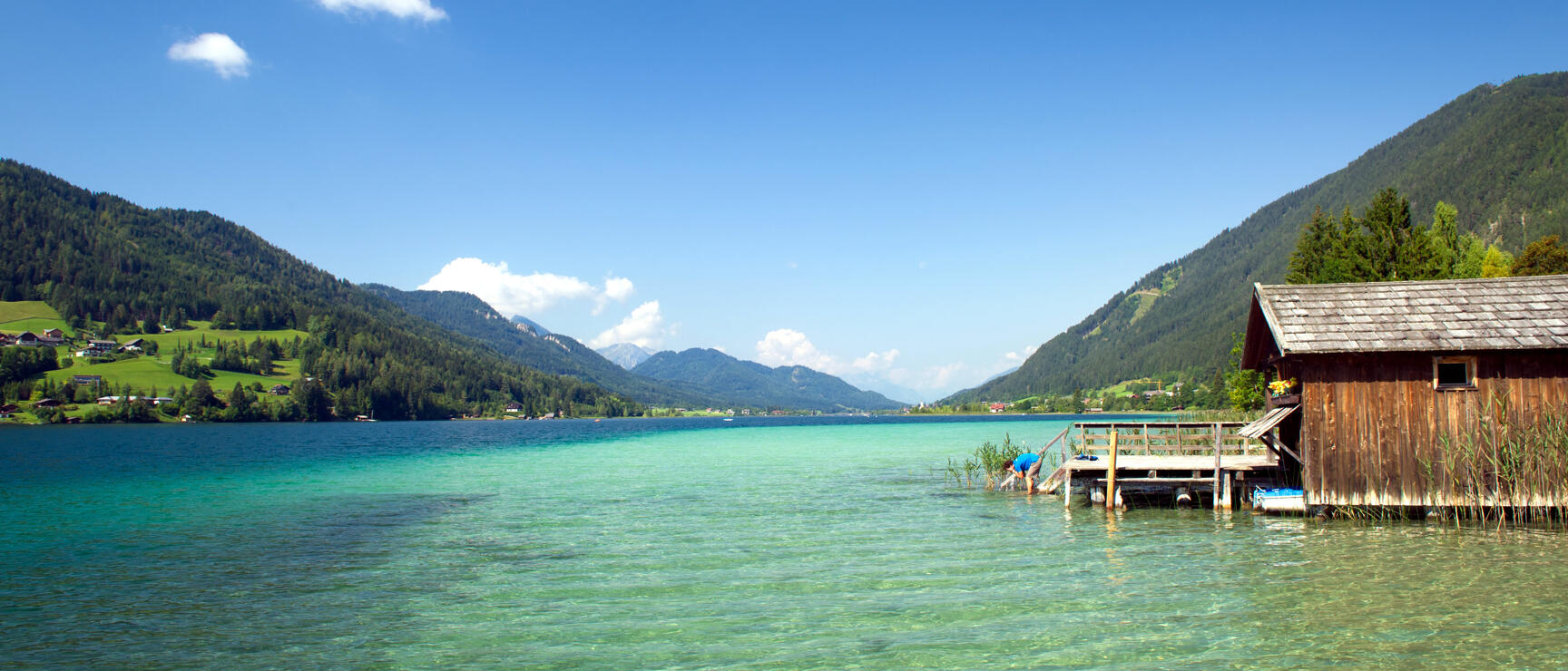
Austria's Lakes and Mountains
Rejuvenate body, mind, and soul
Embrace mountains and lakes, and leave your worries behind.
In Austria, people align themselves with the rhythm of nature. The Alpine way of life runs deep, with locals cherishing their mountains and lakes. This passion is woven into everyday leisure activities across most regions. What nature has created - and what Austrians carefully preserve - can be experienced in many ways: hiking, high-altitude trails, secure climbing routes, and vast mountain biking tracks. The Austrian mountain landscape is truly breathtaking! The country is crisscrossed by the Alps - towering mountain ranges, valleys, forests, meadows, Alpine pastures, and crystal-clear lakes. Within these landscapes lie villages and towns, each offering a unique character and rich culture, closely tied to their Alpine surroundings.
Dive into Austria’s world of water
In Austria, mountains and water go hand in hand. Experience this precious element through mountain streams, powerful rivers, swimming lakes, and roaring waterfalls. The pure, pristine water comes straight from springs and groundwater, making Austria one of the most water-rich countries in the world. It’s a treasure to truly soak in!
Holiday in the mountains and by the water
Catch the Alpine spirit
Why we are drawn to the mountains
The joy of being active in nature
"Walking, moving, climbing a mountain and coming back down – that’s a bit like life," says Peter Habeler, the Austrian extreme mountaineer and pioneer who knows what he is talking about. And it's true: Being active in nature makes us feel more relaxed and happier. Nature has a calming effect, gets our blood pumping, and clears our minds.
The sun is shining, a gentle breeze is blowing, and the towering Alps surrounding you are truly impressive. At the start of the hike, you might be focused on chatting with friends or lost in your own thoughts, but soon it becomes all about the path and then simply nature. Before you know it, everyday life feels miles away, and it’s all about the here and now. The mountains have a magical effect, providing honesty, authenticity, and a place where everything feels just right.
Austria: The Alpine show garden
Land of (tall) mountains and meadows
Eight Alpine countries share the highest mountain range in Europe, spanning approximately 200,000 m2 / 20,000,000 ft2 of majestic rock.
With 29%, Austria boasts the largest share of the Alps, dotted with numerous Alpine huts to explore.
Alpine pastures: Space to recharge
"I love being outdoors, facing the elements and finding my inner peace. Suddenly, you start to notice the simple, beautiful things again."
Guido Unterwurzacher, Tirolean mountain guide and extreme climber
8 stunning bathing lakes in the alps
Discover 6 spectacular mountain lake trails
Austrian provinces with mountains and lakes
How can we protect the mountains?
Eco-friendly travel tips
Take everything you bring to the mountains back with you and dispose of it properly – tissues, packaging, drink bottles, etc.
Stick to marked hiking trails! This helps keep animals and young forests undisturbed.
Be mindful of wildlife! Observe cows, sheep, and wild animals from a distance.
Make use of the well-developed network of regional trains and hiking buses.
Choose mountain huts that are committed to sustainability and environmental protection.
Inspire your children with a love for nature! What they know, they will value.
Protect biodiversity: National park rangers will show you how.